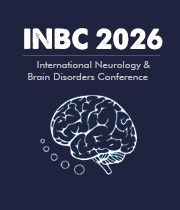Title : Estrogen replacement therapy and Alzheimer’s disease incidence in aging women: A TriNetX-based analysis
Abstract:
Alzheimer's disease (AD) is a progressive neurodegenerative disease that accounts for more than 60% of cases of dementia worldwide. Notably, women are disproportionately affected, comprising nearly two-thirds of all AD diagnoses and experiencing more rapid and severe cognitive decline compared to men.1,2 While the underlying mechanism of this sex-based disparity has yet to be fully elucidated, estrogen decline following menopause has been proposed as a contributing factor. Estrogen is thought to exert neuroprotective effects through several pathways in the aging brain, including reduction of glutamatergic excitotoxic cell death and beta-amyloid-induced neurotoxicity.3,4,5,6 Further studies in rodents have reported accelerated plaque deposition and behavioral impairment in estrogen-knockout models.7,8
However, clinical studies investigating the relationship between estrogen replacement therapy (ERT) and AD risk have yielded mixed results.9,10,11,12,13,14 The current retrospective cohort study utilizes the TriNetX electronic medical record (EMR) database to investigate the incidence of AD among women above the age of 35 based on ERT usage (n=509 patients per cohort). A total of 1,018 patients (509 per cohort) were matched for eight common AD risk factors using propensity score matching. Results showed that women using ERT had a 4.12% significantly reduced incidence of AD compared to non-ERT users (p=0.0065). Our findings contribute to the growing body of research discussing ERT modulation in AD and the potential roles of estrogen in the neurodegenerative disease process.




